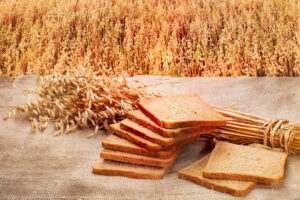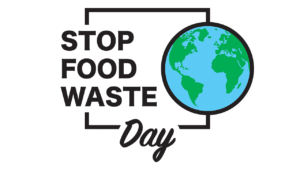Back in April, John Tyson, Chairman of the Board at Tyson Foods, published a full-page ad in several newspapers asserting the food supply chain is breaking.[1] His assertion not only garnered headlines but motivated a lot of people to take a serious look at how resilient the food supply chain actually is. Gianluca Corinaldesi believes food supply chains may be more resilient than some critics think. He writes, “Food supply chains are characterized by underlying resilience and large reserves, which has allowed U.S. and EU grocery stores to be well stocked with food.”[2] He also bases his opinion on information provided by experts. For example, Daniel Wintz, principal data scientist at Lineage Logistics, told Corinaldesi the fact that food spoils means “there’s a resiliency built into the food supply chain.” Wintz added, “Bacteria wants to eat our food and it spoils, and so things are a bit more efficient. We really have only a few days to get it to the grocery store and then they have a few days to sell it.” Wintz’ colleague, Elliott Wolf, vice president and chief data scientist of Lineage Logistics, told Corinaldesi, “I’m proud of the fact that of all of the supply chains implicated in this [pandemic], whether [it be] personal protective equipment, medical devices, pharmaceuticals, dry food, the only one that really didn’t fall down was perishable food. Carrots are available. Meat is still broadly available.” Have there been problems? Sure. Are there remaining concerns? Absolutely. But, by and large, the food supply chain has demonstrated a high degree of resilience.
Shaken but not broken
Jack Grimshaw reports, “The outbreak of the COVID-19 pandemic has disrupted every industry around the world, with the food supply chain, and meat in particular, being hit heavier than most.”[3] Rather than being alarmed by that statement, we should take heart. Grimshaw explains, “Experts believe that the system has been coping with the increased pressure and disruptions. … Supply has still been available to consumers, and price rises haven’t been major, which is a positive sign for the country and the economy. … Whilst potentially limited, supply will still be available to consumers, and shortages will be unlikely.” Prices for some food commodities have risen; however, the outlook is not bleak. If shortages do occur, they will likely be the result of consumer behavior, especially hoarding. Amir Sharif (@amsharif), an Associate Dean at University of Bradford School of Management, explains, “Beyond specific shortages artificially created by panic-buying and stockpiling of a few essentials, widespread food availability has generally not been adversely affected.”[4]
He continues, “Despite the complexity of food supply chains, with many different foodstuffs, approaches and stakeholders involved (farmers/producers, suppliers, distributors and consumers), the food supply ‘machine’ continues to work well. The food industry has been ahead of the curve in its management of risk and planning for contingency over many years. It has become a sophisticated and mature operation, learning from mistakes, successes and opportunities to tighten collaboration across multiple countries and jurisdictions.” He admits his comments are only true for the developed world. The developing world is seeing a very different picture and starvation is a real possibility for millions of people.
Although there are good reasons to be optimistic, Elizabeth Crawford (@ECrawfordwrites) reports companies involved in the food supply chain aren’t resting on their laurels. She writes, “Following recent high-profile claims that the food supply chain is buckling under pressure from the ongoing coronavirus pandemic, the Consumer Brands Association is teaming with more than 35 trade associations to address long- and short-term challenges that threaten the ‘timely flow of goods.’ … The creation of the Critical Infrastructure Supply Chain Council suggests that a piecemeal approach to addressing supply chain challenges may not be the most efficient solution for the overall industry, which shares many of the same concerns from other segments, including government.”[5] CBA Vice President of Public Affairs, told Crawford, “Supply chain problem solving doesn’t occur in a vacuum — it’s deeply shaped and influenced by government policy, regulation, and support.”
Challenges ahead
Niv Elis (@NivElis) writes, “Experts say that by and large, Americans don’t need to worry about food running out, but that does not mean all food will be readily available.”[6] He sees five major challenges facing food supply chains. They are:
1. Virus outbreaks at food plants. “One vulnerable spot in the nation’s foods supply chains is processing plants, where workers often stand in close quarters as they prepare food to be delivered to grocery stores and wholesale customers. The close proximity has increased the risk of outbreaks in the plants.”
2. Agricultural reliance on guest workers. “President Trump announced he would ‘suspend immigration’ but is reportedly not planning to include guest worker programs in the ban. One likely reason is that America’s agricultural sector depends heavily on foreign workers to pick crops. Last year, nearly 250,000 foreign workers were employed in American agriculture. The pandemic and some of the policies surrounding it could be a problem for farmers and their workers.”
3. Supply chain mismatches. “Even as some grocery store aisles are empty and food banks clamor for donations, some agricultural businesses are resorting to spilling or throwing away huge quantities of food. Some $5 billion of fresh fruits and vegetables have already gone to waste, according to the Produce Marketing Association, an industry trade group. Some dairies have been pouring thousands of gallons of milk down the drain. The reason is that the country’s supply chains are set for normal times, when people get a significant amount of food from restaurants and many kids eat lunch and drink a carton of milk at school. Those supply chains are struggling to adapt to the lockdown reality in which most Americans are confined to home. Grocery stores don’t have relationships with wholesale producers, which in turn do not have the facilities for packaging and selling food in a way people are used to seeing it on shelves.”
4. Increased food insecurity. “Even before the pandemic began, 37 million people were considered food insecure, according to Monica Hake, a senior research manager at Feeding America, a hunger-prevention group. The economic downturn from the coronavirus is only set to make that number rise.” Although Elis lists this as a supply chain challenge, it is more of a challenge for social programs than supply chains.
5. Crunch on delivery capacity. “As more and more cities have locked down, the problem of how to get food into people’s homes has grown. People practicing stringent social distancing have resorted to grocery deliveries, leaving delivery services strapped for workers. Grocery stores have had to implement new cleaning and social distancing guidelines and in many places are limiting the number of shoppers allowed in at a time. They require customers to wait in lines outside, six feet apart, and wear face masks in the stores. That’s taken a tough toll on the grocery store workers.”
Concluding thoughts
At the end of the day, the novel coronavirus outbreak is a health problem. The pandemic’s effects are felt in every economic sector; however, the challenges it creates won’t be solved until the health crisis is over. As Elis notes, one of the biggest challenges the food supply has is ensuring workers remain safe and healthy — whether they are working in fields, in warehouses, or in stores. Fortunately, the basics of the food supply chain remain solid. As Sharif concludes, “We should be thankful for strong and resilient food supply chains that are ensuring food security for the majority of us.” That said, we need to find ways to improve food resilience for those in the minority.
Footnotes
[1] John Tyson, “Feeding the Nation and Keeping Our Team Members Healthy,” Tyson, 26 April 2020.
[2] Gianluca Corinaldesi, “Food Supply Chains and COVID-19,” Duke Today, 12 May 2020.
[3] Jack Grimshaw, “COVID-19: Food Supply Chains Shaken, But Not Broken,” Supply Chain Digital, 13 May 2020.
[4] Amir Sharif, “Coronavirus Is Changing Consumer Habits in the Food Industry,” Brink, 10 May 2020.
[5] Elizabeth Crawford, “‘Supply chain problem solving doesn’t occur in a vacuum,’ CBA says of new critical infrastructure council,” Food Navigator-USA, 12 May 2020.
[6] Niv Elis, “Five threats to US food supply chains,” The Hill, 22 April 2020.





